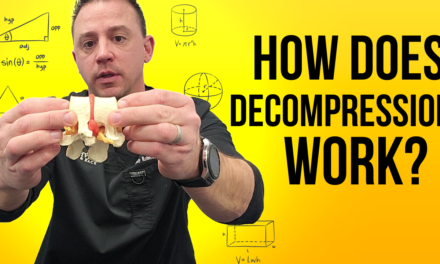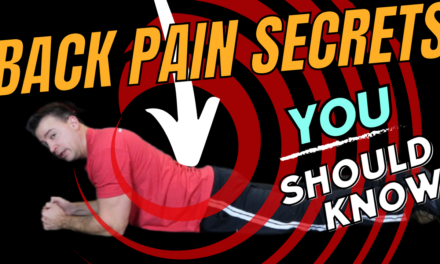How to Stop Vertigo Immediately with the Foster Technique
Introduction
Vertigo can be a terrifying experience, making you feel like the world is spinning out of control. It can strike at any moment, disrupting your daily life and leaving you feeling disoriented and helpless. If you’re one of the many people suffering from vertigo, especially if it’s linked to neck or back issues, there’s a technique that might provide immediate relief: the Foster technique. In this article, we’ll explore what vertigo is, how it’s connected to neck and back pain, and how you can use the Foster technique to stop vertigo in its tracks.
Understanding Vertigo
What is Vertigo?
Vertigo is a sensation of spinning or dizziness, often accompanied by nausea, vomiting, and imbalance. It can make you feel like you or your surroundings are moving when they aren’t. Vertigo isn’t a disease but a symptom of various conditions.
Causes of Vertigo
Vertigo can be caused by problems in the inner ear, vestibular nerve, or brain. Common causes include benign paroxysmal positional vertigo (BPPV), vestibular neuritis, and Meniere’s disease. Interestingly, neck and back issues can also lead to vertigo. Misalignments in the cervical spine or muscle tension in the neck can affect the inner ear’s balance mechanisms, leading to vertigo.
The Foster Technique Explained
What is the Foster Technique?
The Foster technique, also known as the half somersault maneuver, is a simple, non-invasive method to treat vertigo, particularly BPPV. Dr. Carol Foster, an otolaryngologist, developed this technique to help patients manage vertigo without needing medication or more invasive treatments.
How the Foster Technique Works
The Foster technique works by repositioning the otoconia (tiny crystals in your inner ear) that have moved into the semicircular canals, which cause vertigo. By performing specific head movements, you can move these crystals back to their proper place, alleviating the spinning sensation.
Step-by-Step Guide to the Foster Technique
Preparation
Before you start, ensure you have a comfortable space where you can kneel and move freely. You might want a pillow for your knees and a mat to protect against any accidental falls.
Detailed Steps
Step 1: Kneel Down
Start by kneeling on the floor and look up at the ceiling for a few seconds. This position helps move the otoconia away from the sensitive area in your ear.
Step 2: Head Down
Next, touch your head to the floor, tucking your chin towards your knees, as if you were doing a somersault. Hold this position for 30 seconds or until the vertigo stops.
Step 3: Turn Head to the Affected Side
Turn your head to face the side that’s causing the vertigo. If you’re unsure which side it is, you can try both sides to see which works best.
Step 4: Raise Head to Back Level
Keeping your head turned, quickly raise it so it’s in line with your back. Hold this position for another 30 seconds.
Step 5: Return to Upright
Finally, sit up quickly, keeping your head turned to the affected side. This final move helps reposition the otoconia into the utricle, where they belong.
Tips for Success
– Perform the movements smoothly and deliberately.
– Stay calm and focus on your breathing to help manage any anxiety.
– Have someone nearby to assist if you feel unsteady.
Benefits of the Foster Technique
Immediate Relief
The most significant benefit of the Foster technique is its potential to provide immediate relief. Many people find their vertigo symptoms significantly reduced or eliminated after just one session.
Non-Invasive and Drug-Free
The Foster technique is a non-invasive, drug-free treatment. It’s an excellent option for those who want to avoid medications and their potential side effects.
Easy to Do at Home
You can perform the Foster technique at home without any special equipment. This makes it a convenient option for those who need immediate relief and cannot visit a doctor right away.
Minimal Risk
The technique is generally safe and easy to learn. However, it’s essential to follow the steps carefully to avoid any discomfort or injury.
Precautions and Considerations
When Not to Use the Foster Technique
While the Foster technique is safe for most people, there are certain situations where it might not be advisable:
– If you have severe neck or back issues that could be aggravated by the movements.
– If you have high blood pressure or any condition that affects your ability to balance.
Potential Side Effects
Some people might experience mild discomfort or a temporary increase in vertigo symptoms when performing the technique. If you feel any severe pain or if your symptoms worsen significantly, stop the exercise and consult a healthcare professional.
Consult with a Healthcare Professional
If you have persistent vertigo or are unsure about performing the technique, it’s always best to consult with a healthcare professional. They can provide guidance and ensure that you’re using the method correctly.
Case Studies and Success Stories
Real-Life Examples
I remember a patient named Lisa who struggled with vertigo for years. Her vertigo episodes were so severe that they affected her work and social life. Lisa was skeptical but decided to try the Foster technique after a particularly bad episode. She was amazed at how quickly it worked. Within minutes, her vertigo subsided, and she felt more in control of her life again.
Anecdotes from Patients
Another patient, John, had neck pain that contributed to his vertigo. After incorporating the Foster technique with regular chiropractic care, he noticed a significant improvement. Not only did his vertigo episodes decrease, but his neck pain also became more manageable.
Integrating the Foster Technique with Chiropractic Care
Complementary Treatments
While the Foster technique can provide immediate relief, addressing the underlying causes of vertigo is crucial for long-term management. Chiropractic care can help by realigning the spine and reducing muscle tension that might contribute to vertigo.
Chiropractic Techniques
Chiropractors use various techniques, such as spinal adjustments, soft tissue therapy, and posture correction, to address neck and back issues. These treatments can improve overall spinal health and reduce the frequency of vertigo episodes.
Creating a Comprehensive Treatment Plan
Combining the Foster technique with chiropractic care creates a comprehensive treatment plan. This plan can help manage vertigo symptoms and address the root causes, providing long-term relief and improved quality of life.
Frequently Asked Questions (FAQs)
Common Questions About the Foster Technique
Q: How often should I perform the Foster technique?**
A: You can perform the technique as often as needed when you experience vertigo symptoms. However, if symptoms persist, consult a healthcare professional.
Q: Can the Foster technique be used for all types of vertigo?**
A: The Foster technique is most effective for BPPV. It might not be as effective for other types of vertigo, so it’s essential to get a proper diagnosis.
Q: Is it normal to feel dizzy after performing the technique?**
A: Some dizziness is normal immediately after performing the technique. If dizziness persists or worsens, seek medical advice.
Conclusion
Vertigo can be a debilitating condition, but the Foster technique offers a simple, non-invasive way to find immediate relief. By following the steps outlined in this article, you can manage your vertigo symptoms effectively and improve your quality of life. Remember, while the Foster technique is highly effective, it’s always a good idea to consult with a healthcare professional, especially if your vertigo is persistent or severe.
Call to Action
Are you ready to try the Foster technique and say goodbye to vertigo? Share this article with friends and family who might benefit, and don’t hesitate to contact a chiropractor for a comprehensive treatment plan tailored to your needs. Together, we can conquer vertigo and reclaim a balanced, joyful life!





